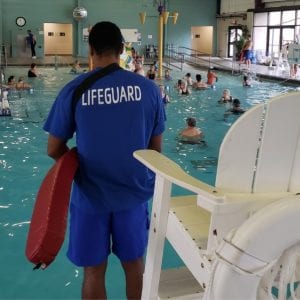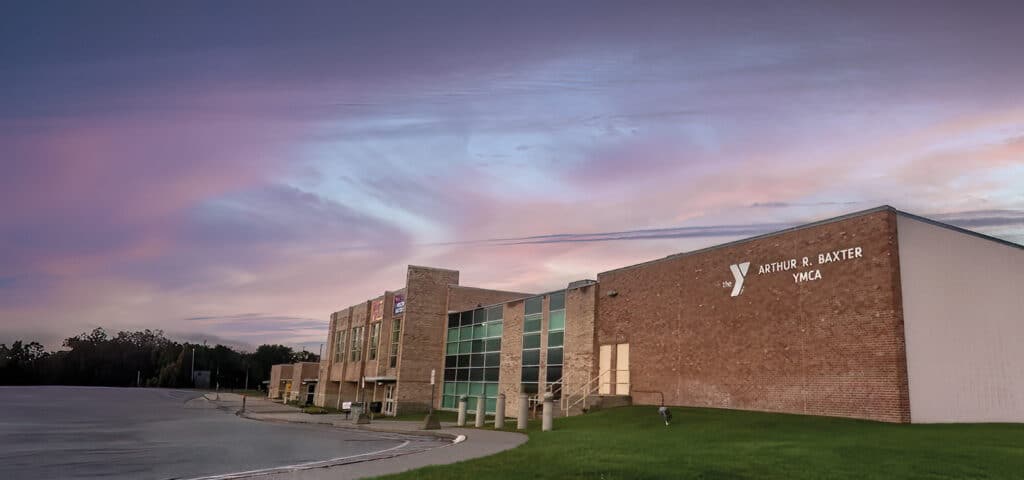WATER SAFETY FOR SAFETY SAKE
Swimming is great exercise, as well as a fun way to spend time together as a family. There’s nothing like spending an afternoon splashing around in the water and enjoying being together. Unfortunately, many people don’t realize how dangerous swimming can be without a clear understanding of potential hazards and how to handle themselves in any body of water.
WHY WATER SAFETY IS A PRIORITY
Drowning is the 2nd leading cause of death for kids ages 1—14 behind motor vehicle crashes, according to the U.S. Consumer Product Safety Commission.
• About one in five people who die from drowning are children 14 and younger. For every child who dies from drowning, another five receive emergency department care for nonfatal submersion injuries.
• A CDC study about self-reported swimming ability found that, among racial groups, African Americans reported the most limited swimming ability. Factors such as access to swimming pools may contribute to the racial differences in drowning rates.
• 88% of kids who drown do so under adult supervision.
• 60% of kids who drown are within 10 feet of safety.
• Life jackets save lives. Proper fit and comfort increase willingness to put it on.
WATER SAFETY MONTH
May is National Water Safety Month. As we approach the summer months, the YMCA of Greater Indianapolis would like to share some water safety tips and information that should be applied to all water situations. Following these tips means being water-smart, having swimming skills and knowing how to help others.
TOP WATER SAFETY TIPS
Water safety encompasses a person’s behavior in and around the water. Before taking your kids to the pool, beach or lakeshore, teach them these 10 basic water safety tips to ensure a safe and pleasant water experience.
LIFEGUARD ON DUTY

Always swim where a lifeguard is on duty.
Swimming should only happen when a lifeguard is on duty. A lifeguard’s job is all-encompassing and not just watching the people in the pool or body of water. It is their job to stay focused on the water and environmental conditions. They should also advise swimmers of any safety concerns or questionable conditions, such as bad weather, murky water, or rough surf, that might be an issue. They are also equipped to quickly and efficiently handle situations with the knowledge that comes from training, certifications, and frequent in-services to review procedures.
NEVER SWIM ALONE
In addition to swimming with a lifeguard nearby, a good rule of thumb — for children and adults — is to use the buddy system while swimming. Instruct your child to always swim with a friend or sibling so they can look out for one another if their parents aren’t physically in the pool with them. Besides being more fun to swim with a friend, this also ensures there is someone who can go for help if something goes wrong.
KEEP A CLOSE EYE ON CHILDREN
Being around water usually means fun for all. However, when your children are in the water, it’s imperative that you know where your child is at all times. As a general rule of thumb, a parent should be within arm’s reach of a young child at all times. This holds true regardless of the source or size of the body of water. Bathtubs and baby pools are just as much a concern as a large backyard pool or lake. Parents of older children should stay close and keep eyes on their children. Even ones who are strong swimmers need supervision because they are prone to water play that may be unsafe and may be the cause of injury.
NO HOLDING BREATH UNDERWATER
While in the water, children should not hold their breath for an extended period of time as this can cause drowning along with additional severe risks. Make sure children understand that competing to see who can hold their breath underwater, and similar games, can be dangerous and should never be a part of water play.
If a swimmer holds their breath too long or hyperventilates before going underwater — meaning they are breathing deeper or faster — they are at a higher risk of passing out underwater. Children who swim competitively should learn proper breathing techniques to avoid problems during practices or meets.
WEAR A LIFE VEST
Young children or inexperienced swimmers should always wear a Coast Guard-approved life jacket around water. There are plenty of products on the market claiming to help children stay afloat, such as water wings, floaties, pool noodles, etc., but these are not a suitable substitution for life jackets or lifesaving devices in a genuine emergency. Use these products only when a parent or trustworthy adult is within arm’s length of the child using them.
Life jackets alone are not enough when it comes to staying safe around water.
NEVER JUMP IN TO SAVE ANOTHER

Reach, Throw, and Go. Never jump in to save another.
If a child sees their friend struggling to keep their head above water, their first instinct may be to jump in to help. However, doing so could lead to both people drowning. The Y’s Safety Around Water program recommends the “reach, throw, don’t go” technique, which involves using a long object, such as a pool noodle, to pull a struggling swimmer to safety. By using this technique, children can help their friend without putting themselves at risk.
ALWAYS ENTER FEET FIRST
Severe injuries can occur when kids jump or dive headfirst into the shallow water of a pool or a body of water where the bottom cannot be seen. Make sure your child understands the proper way to enter and exit the pool or body of water. If they’re interested in jumping and diving, make sure to teach them the correct way to do it, as well as point out the areas where it is safe to do so. If your pool does not have an area designated for diving, do not allow it, no matter how deep the water.
STAY IN DESIGNATED SWIM AREAS
Whether you’re swimming in a pool, ocean or lake, staying within the designated swim areas is vital to staying safe. Teach children about ropes and why people use them to divide a pool. Never encourage a child to swim in water deeper than their abilities will allow, especially if you’re swimming in a lake or ocean, always follow guidelines that have been posted.
GET CPR CERTIFIED
While we hope your family will follow all these guidelines and stay safe in the water, the unfortunate truth is that accidents happen. If a drowning incident or pool-related accident occurs, bystanders are typically the first available to react and respond. As a parent supervising children, it’s critical for you to be familiar with lifesaving techniques, including CPR for children and adults. Knowing how to perform CPR can be the difference between life and death. Get your CPR certification — and keep it up to date — through your nearest YMCA when available.
BE PROACTIVE
Empty portable pools when not in use. Children can drown in as little as one inch of water. Make sure all portable inflatable and baby pools are drained and put away immediately after use.
Remove toys from the pool when they are not in use. They can attract young children into the pool. It’s best to keep them stored out of sight.
Lifesaving equipment such as life rings and reaching poles are also recommended.
Follow posted safety rules. These usually include no running, pushing or dunking.
Knowledge is key when it comes to water and pool safety. Educating children from a very young age, and keeping yourself informed, can lead to a lifetime of healthy, and safe swimmers. Ultimately, children and adults should learn to swim so they are able to achieve the skills of water competency: which include being able to enter the water, get a breath, stay afloat, change position, swim a certain distance and get out of the water safely.
The YMCA of Greater Indianapolis has been hard at work keeping you well informed about virtual options at your convenience. Visit our YouTube channel for an opportunity to view all of the water safety tips that we have produced for you over the last few weeks.
















